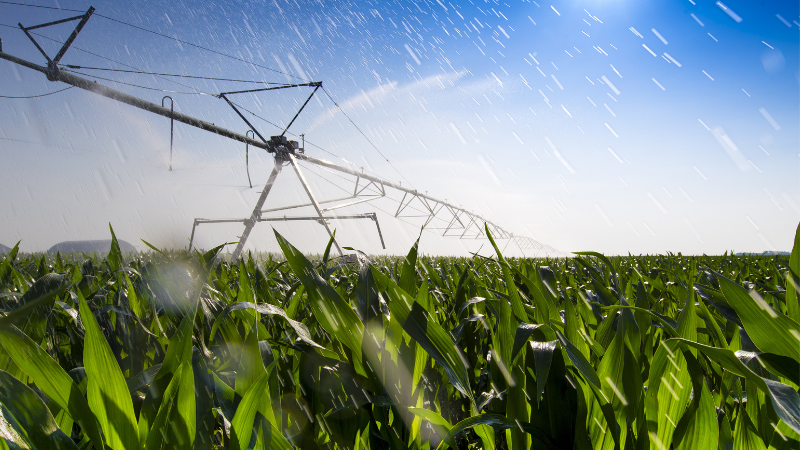Protecting Against Sulfur Deficiency in Sandy Soils

Interesting fact: Close to 95% of the sulfur found in soil is contained within the organic matter.
This poses a challenge for those who farm in the areas of the central United States (and Canada) where sandy (or coarse-textured) soils that are low in organic matter are prevalent.
The University of Minnesota has done extensive work on the subject of sulfur in sandy soils. They have found that those who farm sandy soil, and soil where organic matter is low (<4.0% in the surface horizon) “should be most concerned” about including sulfur as part of a fertilizer program.
Identifying sulfur deficiency
Sulfur is essential to the formation of proteins in a plant and plays a central role in photosynthesis. As a result, it helps give plants healthy green foliage. So it is no surprise that in most crops, sulfur deficiency can be identified by a yellowing of the leaves. (Learn more about deficiency symptoms by crop.)
Annual soil testing for sulfur levels is highly recommended for those farming in sandy soil, as a way of mitigating sulfur deficiency. Tissue testing is recommended if you notice yellowing of the younger, upper leaves (a common sign of a sulfur deficiency, since sulfur, is not mobile in the plant).
Strategies for maximizing sulfur availability in sandy soils
1. Follow a sulfur fertilizer program that mitigates loss to leaching
Crops require sulfur throughout the growing season. Sulfate fertilizers will provide immediate sulfur in a plant-available form. In higher concentrations, they will provide nutrients into the growing season.
The challenge with using a sulfate fertilizer in sandy soil is that sulfates (like nitrates) are quite mobile within the soil – and sandy soils are particularly prone to leaching. This is accelerated in years where there is excessive rainfall – or in areas that rely on irrigation. Leaching will cause the sulfate to move below the root zone, where it becomes inaccessible to plants.
One common option is to apply an elemental sulfur product (eg. degradable bentonite sulfur) in conjunction with AMS.
The ammonium sulfate will provide immediate sulfur to the plant, while the degradable elemental sulfur will be steadily converted to sulfate by microbes throughout the growing season. Due to its high sulfur analysis and economical price, using elemental sulfur can reduce the amount you need to spend on AMS.
2. Incorporate plant residue to build organic matter
Not all of the sulfur the plant uses is removed at harvest. The remaining plant residues are a valuable source of sulfur and other nutrients, which can benefit the following crop. As a general guideline, 3-5 lbs of sulfur will be mineralized each year for every percent of organic matter found at a soil depth of 0-6″.
Organic matter from the plant can be incorporated through fall tillage or cultivation. Plowing at a depth of 7-12” along with a nitrogen source can enrich the soil. Even in a to-till situation, some of the sulfur from the residues will be returned to the soil.
3. Building sulfur reserves through an annual strategy
If the sulfur deficiency is significant, an agronomist may recommend building up sulfur levels through a seasonal program. While a one-time application of an elemental sulfur product can be helpful, steadily building up sulfur reserves over consecutive years is shown to improve soil health and help build microbial populations.
Maximize your spoils in sandy soils
The nice thing about sulfur as a nutrient is that it’s relatively inexpensive (particularly if you’re using a high-quality elemental product) and a little goes a long way. By staying on top of your sulfur levels and doing what you can to prevent loss due to leaching, you can maximize crop performance in sandy soils.




